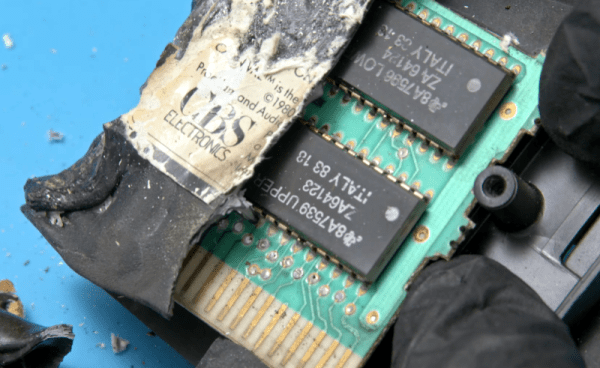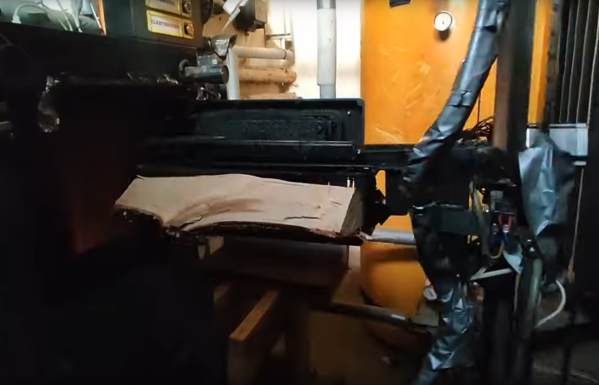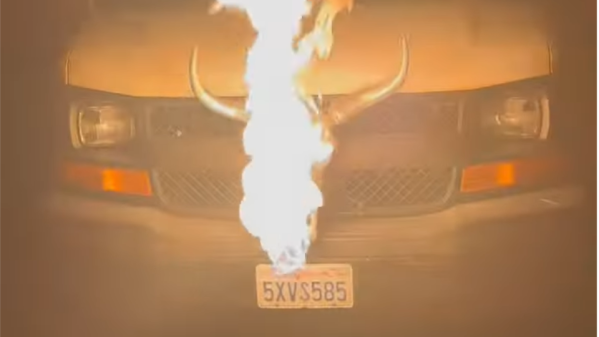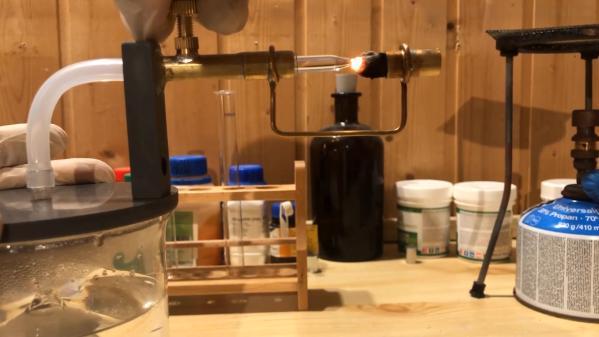“Please say it wasn’t a regex, please say it wasn’t a regex; aww, crap, it was a regex!” That seems to be the conclusion now that Crowdstrike has released a full root-cause analysis of its now-infamous Windows outage that took down 8 million machines with knock-on effects that reverberated through everything from healthcare to airlines. We’ve got to be honest and say that the twelve-page RCA was a little hard to get through, stuffed as it was with enough obfuscatory jargon to turn off even jargon lovers such as us. The gist, though, is that there was a “lack of a specific test for non-wildcard matching criteria,” which pretty much means someone screwed up a regular expression. Outside observers in the developer community have latched onto something more dire, though, as it appears the change that brought down so many machines was never tested on a single machine. That’s a little — OK, a lot — hard to believe, but it seems to be what Crowdstrike is saying. So go ahead and blame the regex, but it sure seems like there were deeper, darker forces at work here.
fire105 Articles
ColecoVision Cart Rises From Ashes
We felt bad for [Mark] of Mark Fixes Stuff. Apparently, his house burned down and took virtually everything, including his retrocomputer collection. He did manage to pull out a few things from the remains including a ColecoVision cartridge that was — honestly — melted. We probably would have written it off, but [Mark] was determined to recover something.
He was fortunate that the PCB was not burned, but it was covered in soot and possibly other things. However, the case looked like a chocolate bar left on a dashboard for a few summer days in the tropics.
Feeding The Fire By Robot
It might seem a little bit counterintuitive, but one of the more carbon-neutral ways of heating one’s home is by burning wood. Since the carbon for the trees came out of the air a geologically insignificant amount of time ago, it’s in effect solar energy with extra steps. And with modern stoves and well-seasoned wood, air pollution is minimized as well. The only downside is needing to feed the fire frequently, which [Anders] solved by building a robot.
[Anders]’ system is centered around a boiler, a system which typically sits in a utility area like a basement and directs its heat to the home via another system, usually hot water. An Arduino Mega controls the system of old boat winches and various motors, with a grabber arm mounted at the end. The arm pinches each log from end to end, allowing it to grab the uneven logs one at a time. The robot also opens the boiler door and closes it again when the log is added, and then the system waits for the correct set of temperature conditions before grabbing another log and adding it. And everything can be monitored remotely with the help of an ESP32.
The robot is reportedly low-maintenance as well, thanks to its low speed and relatively low need for precision. The low speed also makes it fairly safe to work around, which was an important consideration because wood still needs to be added to a series of channels every so often to feed the robot, but this is much less often than one would have to feed logs into a boiler if doing this chore manually. It also improves on other automated wood-burning systems like pellet stoves, since you can skip the pellet-producing middleman step. It also eliminates the need to heat your home by burning fossil fuels, much like this semi-automated wood stove.
Retrotechtacular: Rebuilding A Fire-Ravaged Telephone Exchange
Those who haven’t experienced the destruction of a house fire should consider themselves lucky. The speed with which fire can erase a lifetime of work — or a life, for that matter — is stunning. And the disruption a fire causes for survivors, who often escape the blaze with only the clothes on their backs, is almost unfathomable. To face the task of rebuilding a life with just a few smoke-damaged and waterlogged possessions while wearing only pajamas and slippers is a devastating proposition.
As bad as a residential fire may be, though, its impact is mercifully limited to the occupants. Infrastructure fires are another thing entirely; the disruption they cause is often felt far beyond the building or facility involved. The film below documents a perfect example of this: the 1975 New York Telephone Exchange fire, which swept through the company’s central office facility at the corner of 2nd Avenue and 13th Street in Manhattan and cut off service to 300 blocks of the East Village and Lower East Side neighborhoods.
Continue reading “Retrotechtacular: Rebuilding A Fire-Ravaged Telephone Exchange”
Flaming Skull Hood Ornament Is Not Suitable For Use In Traffic
It’s one thing to mount a big skull—human or animal—to the front of your car. Really, though, a good hood skull should breathe fire to truly inspire enmity or awe. Thankfully, when [Anthony] went about modifying his ex-school bus, he was sure to equip it with suitably flaming equipment. It’s dangerous, so don’t try this one at home and melt your car, you hear?
 The build started with an off-the-shelf replica cow skull, in lovely flame-resistant metal. It was then plumbed with a propane feed that could be triggered by a 12-volt solenoid. This was combined with a high-voltage coil driving a grill igniter to provide the necessary initiating spark.
The build started with an off-the-shelf replica cow skull, in lovely flame-resistant metal. It was then plumbed with a propane feed that could be triggered by a 12-volt solenoid. This was combined with a high-voltage coil driving a grill igniter to provide the necessary initiating spark.
To go forth with flames, first, a missile switch must be flipped up and engaged to arm the system. Then, hitting the skull-and-crossbones button will send fire surging forth from the front of the vehicle.
Alternatively, a wireless keyfob can be used, which bypasses the arming system—so leaving the remote in a pocket is ill-advised.
Amazingly, a former project posted on Hackaday served as an inspiration for this build.
Continue reading “Flaming Skull Hood Ornament Is Not Suitable For Use In Traffic”
Stage Lighting Hack Keeps La Bohème From Becoming A Dumpster Fire
With all due respect to the Utah Opera’s production of La bohème, we just couldn’t resist poking a little fun at master electrician [David Smith]’s quick lighting hack for the opera. And who knew an opera from 1896 would need a garbage can fire? Live and learn.
In what appears to be a case of “The show must go on,” [David] was called on to improve an existing fire effect for one scene in the opera, which was reportedly a bit “artificial and distracting.” This is a pretty common problem in live productions of all types; it’s easy to throw light at a problem, but it’s often hard to make it both convincing and unobtrusive. Luckily, he had both the time to come up with something, and a kit full of goodies to make it happen. A balled-up strip of Neopixels provided the light, with an Arduino running some simple code to randomize the intensity and color of the RGBs. [David] stuck with the warm white, red, and green colors, to keep the color temperature about right for a fire, and drove the LEDs with a couple of MOSFETs that he keeps in his kit to fix busted dimmer packs.
The overall effect worked well, but the holes knocked in the side of the greatly abused garbage can let too much light out, making the effect distracting on stage. The remedy was simple: a cylinder of printer paper surrounding the LED tape. The paper not only acted as a diffuser but held the tape in place inside the can. The electrical crew ran two circuits to the can — one to keep the Arduino running throughout the show, and one to power the LED tape. The former made sure the audience didn’t see the microcontroller boot sequence, and the latter gave the electrician a way to control the effect from the dimmer console. The brief video below shows it in action during a rehearsal.
Hats off to [David] and the whole crew for the stagecraft heroics and for getting this thrown together so quickly.
Continue reading “Stage Lighting Hack Keeps La Bohème From Becoming A Dumpster Fire”
Lighting Up With Chemistry, 1823-Style
With our mass-produced butane lighters and matches made in the billions, fire is never more than a flick of the finger away these days. But starting a fire 200 years ago? That’s a different story.
One method we’d never heard of was Döbereiner’s lamp, an 1823 invention by German chemist Johann Wolfgang Döbereiner. At first glance, the device seems a little sketchy, what with a tank of sulfuric acid and a piece of zinc to create a stream of hydrogen gas ignited by a platinum catalyst. But as [Marb’s Lab] shows with the recreation in the video below, while it’s not exactly as pocket-friendly as a Zippo, the device actually has some inherent safety features.
[Marb]’s version is built mainly from laboratory glassware, with a beaker of dilute sulfuric acid — “Add acid to water, like you ought-er!” — bathing a chunk of zinc on a fixed support. An inverted glass funnel acts as a gas collector, which feeds the hydrogen gas to a nozzle through a pinch valve. The hydrogen gas never mixes with oxygen — that would be bad — and the production of gas stops once the gas displaces the sulfuric acid below the level of the zinc pellet. It’s a clever self-limiting feature that probably contributed to the commercial success of the invention back in the day.
To produce a flame, Döbereiner originally used a platinum sponge, which catalyzed the reaction between hydrogen and oxygen in the air; the heat produced by the reaction was enough to ignite the mixture and produce an open flame. [Marb] couldn’t come up with enough of the precious metal, so instead harvested the catalyst from a lighter fluid-fueled hand warmer. The catalyst wasn’t quite enough to generate an open flame, but it glowed pretty brightly, and would be more than enough to start a fire.
Hats off to [Marb] for the great lesson is chemical ingenuity and history. We’ve seen similar old-school catalytic lighters before, too.


















